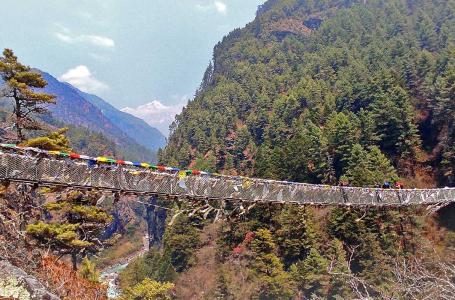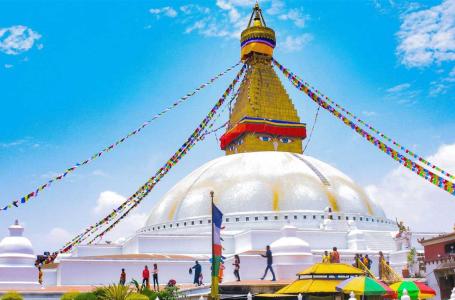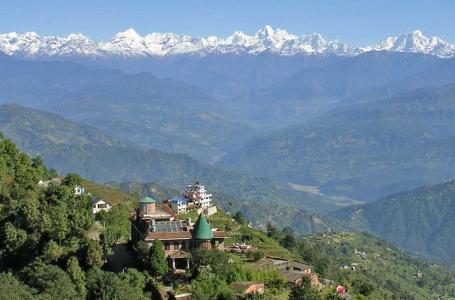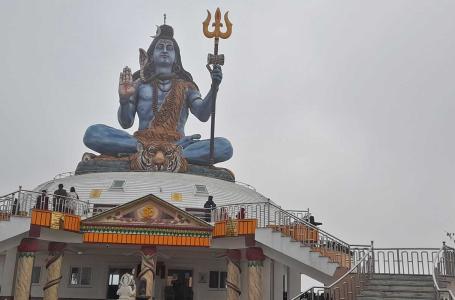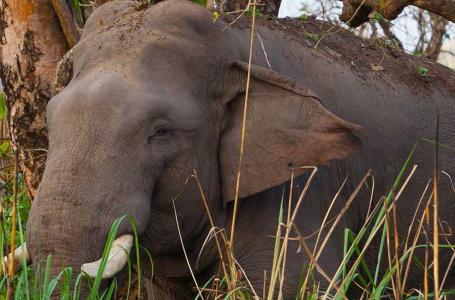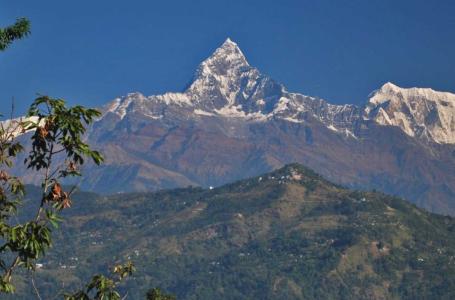The Himalayas beckon. Their snow-capped peaks pierce the sky, promising adventure and breathtaking vistas. But what if you could experience this legendary landscape not just on foot, but from the back of a trusty steed? Our Everest Base Camp Horse Riding Trek offers a unique and unforgettable way to explore the Khumbu Valley, combining the thrill of horseback riding with the awe-inspiring beauty of the world's highest mountains.
The Khumbu Valley has been a passage for trade and exploration for centuries. Traditionally, these paths were traversed by yak caravans, carrying goods between the lowlands and the high Himalayas. Our trek revives this ancient tradition, offering you the chance to experience the valley in a way that's both adventurous and respectful of its history.
Unlike some horse riding adventures that use generic breeds, we partner with local Sherpa communities to provide sure-footed Tibetan ponies. These hardy and well-adapted horses have been traversing these trails for generations. They are accustomed to the high altitude and challenging terrain, ensuring a comfortable and safe ride for riders of all experience levels.
The beauty of this trek lies not just in the horseback riding experience. As you traverse the Khumbu Valley, you'll be surrounded by some of the most spectacular mountain scenery on Earth. Imagine yourself cantering past colorful prayer flags that flutter in the crisp mountain air, with the snow-capped peaks of Everest, Lhotse, and Ama Dablam towering majestically in the distance. The trail winds through charming Sherpa villages, each with its own unique character and cultural heritage. Take a moment to explore these villages, interact with the locals, and get a glimpse into the rich tapestry of life in the Himalayas.
Whether you're a seasoned equestrian with years of experience under your belt, or a complete beginner who's always dreamed of exploring the mountains on horseback, our Everest Base Camp Horse Riding Trek is designed to cater to your needs. Our experienced and multilingual guides will ensure your safety and comfort throughout the journey. They will assess your riding skills and tailor the pace accordingly, providing expert instruction and support along the way. The itinerary is designed for gradual acclimatization to the altitude, with plenty of rest days built in to allow you to soak in the scenery and adjust to the thin mountain air.
Our trek goes beyond the simple act of riding a horse. It's a full cultural immersion experience. You'll have the opportunity to explore the bustling Namche Bazaar, a Sherpa trading hub nestled amidst the mountains. Here, you can wander through the labyrinthine alleys, browse through shops selling traditional handicrafts and souvenirs, and experience the vibrant atmosphere of this high-altitude marketplace. Hike to the iconic Tengboche Monastery, perched on a scenic hilltop overlooking the valley. Witness the serene beauty of this Buddhist sanctuary and experience breathtaking sunrises over the Everest massif, painting the mountains in a kaleidoscope of colors.
Our local guides, many of whom are themselves Sherpa, will share their knowledge of the Khumbu Valley's unique ecosystem and the Sherpa way of life. They will explain the challenges and adaptations of living in such a high-altitude environment, and the deep connection the Sherpa people have with the mountains. You'll learn about their rich cultural heritage, their traditions, and their role as guardians of the Himalayas.
During your trek, you'll stay in comfortable teahouses along the route. These traditional lodges, run by Sherpa families, offer a warm and welcoming atmosphere. You'll be greeted with steaming cups of yak butter tea, a local delicacy that helps ward off the cold. Savor traditional Nepali cuisine, prepared with fresh, local ingredients, and enjoy the warmth of Sherpa hospitality. Sharing meals and conversation with the lodge owners and other trekkers is a fantastic way to connect with the local culture and create lasting memories.
The culmination of your trek is a visit to Everest Base Camp (EBC), the starting point for expeditions to the world's tallest peak. Standing amidst the towering giants of the Himalayas, surrounded by the Khumbu Icefall and the colossal south face of Everest, is an experience that will leave you breathless. Imagine the sense of accomplishment as you imagine the sense of accomplishment as you stand at the foot of Everest, a place that has captured the imagination of explorers and adventurers for centuries. Take a moment to capture this awe-inspiring experience with photographs before returning to Gorakshep for a well-deserved rest.
While horseback riding alleviates some of the physical exertion compared to trekking, the Everest Base Camp Horse Riding Trek still requires a moderate level of fitness. You'll be spending several hours in the saddle each day, navigating uneven terrain and high altitudes. Regular exercise, particularly activities that strengthen your core and legs, will be beneficial in preparing for the trek.
The weather in the Khumbu Valley is unpredictable, and conditions can change rapidly. The best time to embark on this adventure is generally considered to be during the spring (March-May) and autumn (September-November) seasons. These months offer clear skies, comfortable temperatures, and less chance of rain or snow that could make the trails treacherous. However, even during these seasons, be prepared for sudden changes in weather. It's essential to pack layers of clothing that you can easily adjust to maintain comfort in varying temperatures.
The safety of our guests is our top priority. We provide comprehensive pre-departure information and briefings to ensure you're well-prepared for the trek. Our experienced guides are trained in first-aid and wilderness medicine, and will be with you every step of the way to ensure a safe and enjoyable journey.
The Everest Base Camp Horse Riding Trek is more than just a trek; it's an adventure that will stay with you for a lifetime. It's a chance to experience the majesty of the Himalayas in a unique and unforgettable way, to connect with the Sherpa people and their culture, and to push your personal boundaries. So, saddle up, breathe in the crisp mountain air, and prepare to be awestruck by the beauty of Everest.
Upon arrival in Kathmandu, you’ll be greeted by our team and transferred to your hotel. After settling in, take some time to explore the vibrant streets of Thamel or simply relax. In the evening, attend a comprehensive pre-departure briefing. This session will cover the itinerary, safety protocols, and what to expect on your horse riding journey to Everest. This is your chance to ask any last-minute questions and meet your fellow adventurers. You'll also get an introduction to the horses you'll be riding and how to manage them in mountainous terrain. Overnight in Kathmandu.
Start your day early with a thrilling flight from Kathmandu to Lukla, the gateway to Everest. The flight offers stunning views of the Himalayan range and takes about 30-35 minutes. Upon landing in Lukla (2,860 meters), you’ll meet your horse and support team. After a short break, begin your journey on horseback, descending gradually through beautiful pine forests to the village of Phakding (2,610 meters). The 9 km (5.6 miles) trail, covered in approximately 3-4 hours, winds through local villages and along the Dudh Koshi River. It’s a relatively easy ride, perfect for adjusting to the altitude and getting accustomed to your horse. Overnight in Phakding.
After breakfast, saddle up for a ride that will take you deeper into the Khumbu region. The trail today is about 10-12 km (6.2-7.5 miles) and will take around 5-6 hours. You’ll cross the Dudh Koshi River multiple times via thrilling suspension bridges adorned with prayer flags. The trail ascends gradually, passing through dense forests and small Sherpa villages, with a final steep climb to Namche Bazaar (3,440 meters). As the administrative center of the Khumbu region, Namche is bustling with activity, offering a chance to visit local markets, cafes, and shops. The elevation gain today is significant, so you’ll need to ride at a comfortable pace. Overnight in Namche Bazaar.
You'll also enter Sagarmatha National Park, a UNESCO World Heritage Site established to protect the fragile mountain ecosystem. Enjoy a delightful lunch at a teahouse in Jorsalle, a picturesque village nestled amidst rhododendron forests. After lunch, continue your scenic ride, tackling a steeper section that leads to Namche Bazaar (3,440m), a bustling Sherpa trading hub. Check into your lodge and spend the afternoon exploring the lively market, soaking in the unique atmosphere, and allowing your body to adjust to the higher altitude.
Today is dedicated to acclimatization. Acclimatization is crucial for preventing altitude sickness as you ascend higher in the coming days. After breakfast, embark on a short hike on foot to the Everest View Hotel, one of the highest luxury hotels in the world, where you can enjoy panoramic views of Everest, Lhotse, and Ama Dablam. This hike covers about 3-5 km (1.8-3.1 miles) and takes around 2-3 hours. You can also explore Namche Bazaar’s local attractions, such as the Sherpa Museum and the Namche Monastery. Rest in the afternoon to ensure your body adjusts to the altitude. Overnight in Namche Bazaar.
After a hearty breakfast, continue your journey on horseback towards Tengboche Monastery, one of the most significant spiritual sites in the region. The ride today covers about 9 km (5.6 miles) and will take approximately 5-6 hours. The trail initially ascends gradually, offering spectacular views of Everest, Lhotse, and Ama Dablam. After a descent to the Dudh Koshi River, you’ll climb steeply through rhododendron forests to reach Tengboche (3,867 meters). Here, you’ll visit the famous Tengboche Monastery, where you can witness the evening prayers and soak in the peaceful ambiance. Overnight in Tengboche.
After a morning visit to the Tengboche Monastery to absorb the serene atmosphere and perhaps witness the monks' morning prayers, you’ll begin your ride to Dingboche. The journey today covers approximately 12 km (7.5 miles) and takes about 5-6 hours on horseback. The trail starts with a descent through lush forests before crossing the Imja Khola River. As you ascend towards Pangboche, the landscape becomes more barren, with stunning views of Ama Dablam. You’ll pass through quaint villages and traverse open, rugged terrain as you approach Dingboche (4,410 meters). This village, known as the "Summer Valley," is situated in a picturesque setting beneath the towering peaks. The higher altitude will be noticeable, so pacing yourself and staying hydrated is key. Overnight in Dingboche.
Another day dedicated to acclimatization is crucial for a successful summit of Everest Base Camp. Today is another essential acclimatization day to help your body adjust to the thinner air at higher altitudes. After breakfast, take a short hike on foot to the Nangkartshang Peak, which stands at 5,083 meters. The round-trip hike covers about 4-5 km (2.5-3.1 miles) and takes around 3-4 hours.
The effort is rewarded with panoramic views of Makalu, Lhotse, and the Imja Valley. Returning to Dingboche, spend the afternoon exploring the village or resting. The day’s light activity will help your body adapt without overexerting yourself. You can also visit the Kunde Hospital, a high-altitude medical facility established by Sir Edmund Hillary, a pioneer in Himalayan exploration.
In the afternoon, return to your lodge and enjoy the tranquility of the mountain environment. Relax, read a book, or simply soak in the breathtaking views of the surrounding peaks as your body adjusts to the increasing altitude.
Leaving Dingboche, today’s ride takes you further into the Khumbu region as you make your way to Lobuche. The trail is about 11 km (6.8 miles) long, with a riding time of approximately 5-6 hours. The journey begins with a gradual climb out of Dingboche, offering spectacular views of the towering peaks around you. As you progress, the trail becomes more rugged, and the landscape more desolate, reflecting the high-altitude environment. After passing through the village of Dughla, you’ll ascend the steep moraine path to reach the memorials of climbers who lost their lives on Everest, a poignant moment on the journey. From here, the trail levels out as you approach Lobuche (4,940 meters), where you’ll spend the night in preparation for the final push to Everest Base Camp. Overnight in Lobuche.
This is the day you’ve been working towards – reaching Everest Base Camp. The trail from Lobuche to Gorakshep (5,164 meters) is about 4 km (2.5 miles) and takes approximately 2-3 hours on horseback. The terrain is rough and rocky, with glacial moraine dominating the landscape. Upon arriving in Gorakshep, you’ll take a short break before continuing on foot to Everest Base Camp (5,364 meters), as the trail is too challenging for horses. The trek to Base Camp is about 3 km (1.8 miles) and takes 2-3 hours. Once there, you’ll have time to soak in the atmosphere, take photos, and reflect on the incredible journey you’ve undertaken. Afterward, return to Gorakshep for the night. Overnight in Gorakshep.
Wake up early for a sunrise trek to Kala Patthar (5,545 meters), the highest point of your journey and the best vantage point for panoramic views of Everest and the surrounding peaks. The trek from Gorakshep to Kala Patthar is about 2 km (1.2 miles) and takes 2 hours. After capturing the breathtaking views, return to Gorakshep for breakfast before descending on horseback to Pheriche (4,371 meters). The ride covers approximately 12 km (7.5 miles) and takes about 5-6 hours. As you descend, you’ll feel the increasing oxygen levels, and the scenery will become greener. Overnight in Pheriche.
After breakfast in Pheriche, you’ll begin your descent on horseback back towards Namche Bazaar. The journey today covers approximately 19 km (11.8 miles) and takes about 6-7 hours. The trail initially follows a gradual descent through the Imja Valley, passing through the villages of Pangboche and Tengboche. The ride offers another opportunity to visit the Tengboche Monastery if you wish or simply to take in the stunning views one last time. As you continue descending, the air becomes noticeably warmer and more oxygen-rich, providing a welcome relief after several days at higher altitudes. The trail continues through lush forests and across suspension bridges over the Dudh Koshi River, eventually bringing you back to the bustling town of Namche Bazaar. Here, you can enjoy a warm shower, a good meal, and perhaps some last-minute shopping for souvenirs. Overnight in Namche Bazaar.
Today marks the final day of your trekking and riding adventure. After breakfast, begin the descent from Namche Bazaar back to Lukla. The trail covers about 19 km (11.8 miles) and takes around 6-7 hours on horseback. The ride is mostly downhill, retracing your steps through the familiar villages of Phakding and Monjo, passing by rhododendron forests, and crossing the Dudh Koshi River several times. As you approach Lukla, take time to reflect on the incredible journey you've just completed. Upon arrival in Lukla, you’ll have time to relax and celebrate with your team. Depending on flight schedules, you may either stay overnight in Lukla or catch an afternoon flight back to Kathmandu. If you fly to Kathmandu today, you'll be transferred to your hotel for some well-deserved rest. Overnight in Lukla or Kathmandu, depending on flight timing.
If you stayed overnight in Lukla, you’ll take an early morning flight back to Kathmandu. Once in Kathmandu, you’ll have the day to explore the city, do some last-minute shopping, or simply relax before your departure. Depending on your flight time, you may want to visit some of Kathmandu’s UNESCO World Heritage Sites, such as Swayambhunath (the Monkey Temple), Boudhanath Stupa, or Pashupatinath Temple. When it’s time, you’ll be transferred to Tribhuvan International Airport for your departure, marking the end of an unforgettable adventure in the Himalayas.
Trip Start and End Point
Kathmandu / Kathmandu
| DATES | STATUS | PRICE | SPACE LEFT | ||||
|---|---|---|---|---|---|---|---|
|
Start date: 20-Apr, 2025
End date: 02-May, 2025 |
Guaranteed | USD 2899 |
1
|
Book Now | |||

